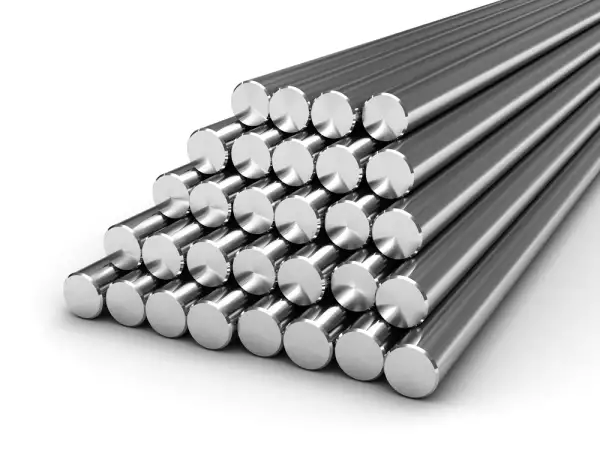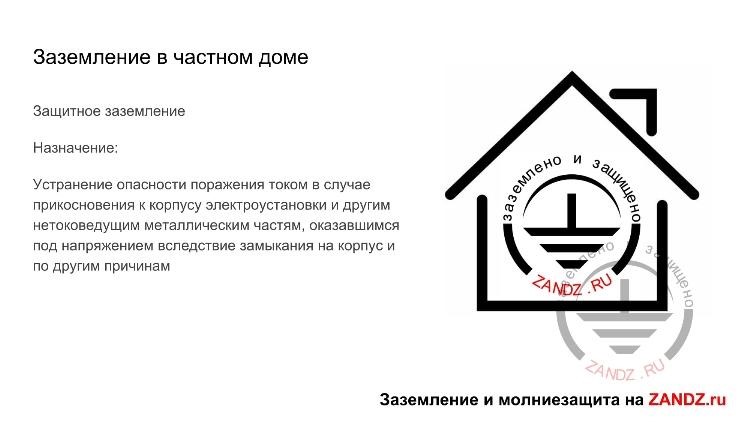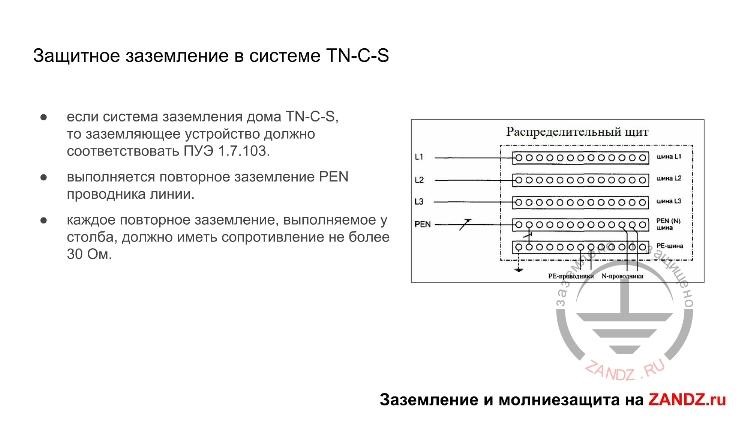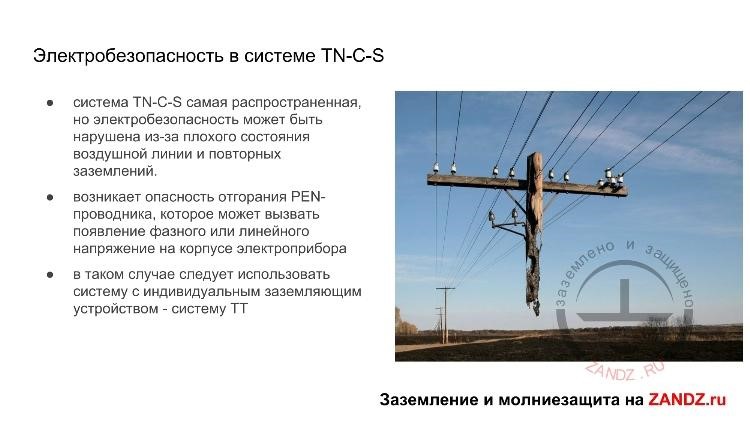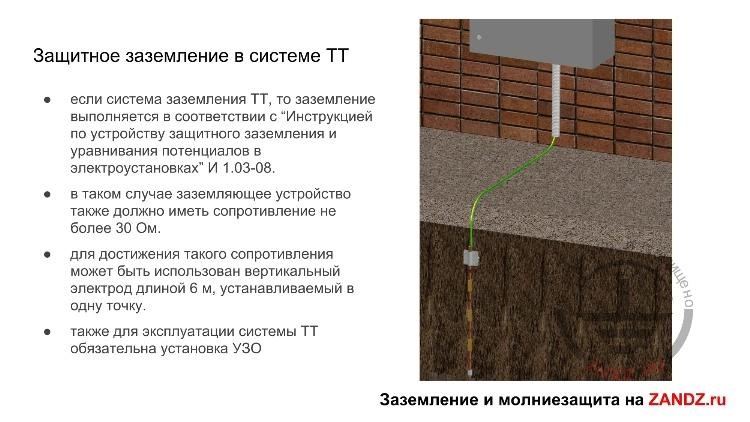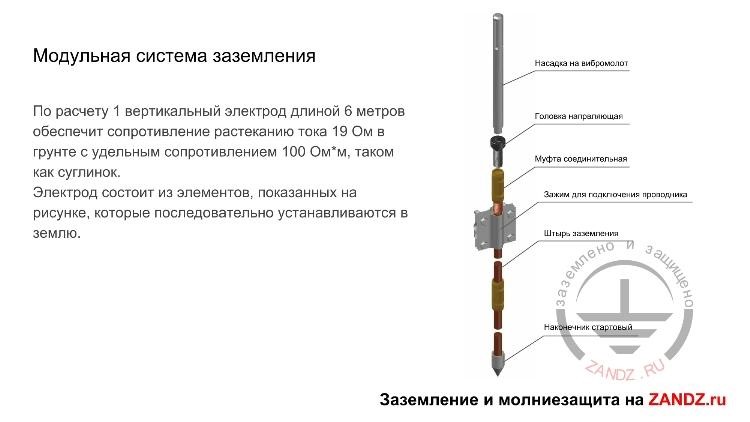The second webinar of the "Simply about installing grounding and lightning protection" series
(held on August 30, 2016 at 11:00 Moscow time)
720p full screen watching is recommended.
Having studied the requirements for grounding and lightning protection in the first webinar, we will proceed to the popular facilities. During the second webinar, we will simply tell you about calculations and installation of grounding and lightning protection for the most popular facility, a private house, a cottage, or a summer cottage. We will give you a full step-by-step instruction: what to start with, what to pay attention to, what difficulties you may face, and how to avoid the common mistakes.
Do not miss a chance to obtain valuable knowledge at first hand. Register and learn free of charge!
Webinar text. Page 1
Fast navigation by slides:
Page 2: >>
7. Touch voltage
8. Lightning protection
9. Preparing
10. Protection methods
11. Rod system
12. Wire system
Approximate reading time: 1 hour 01 minute.
| Вебинар 2. | Webinar 2. |
| Заземление и молниезащита для частного дома | Grounding and lightning protection in a private house |
| Заземление и молниезащита на ZANDZ.com | Grounding and lightning protection on ZANDZ.com |
Grounding and lightning protection in a private house
— This webinar series is intended for electrical specialists, including the beginning specialists, and for those who want to know the fundamentals and aspects of design and installation of grounding and lightning protection. The webinar is led by the director general of the NGN Group electrical company, an experienced electrical engineer, a ZANDZ.com Club expert, Sergei Alekseevich Tolstopyatov. It means that you can see all the features and problems arising in the course of installation by, so to say, the specialist's eyes. Technical specialists of ZANDZ, Dmitry Krasnoborov and Denis Pozdnyakov, are also present in the webinars. They can answer your questions in the chat. So, please do not hesitate to ask any questions, including those related to installation, webinars and lightning protection grounding; any questions. Today, we have the second webinar in our series. It is probable that we will consider the most popular facilities that the electrical specialist deals with, a private house, a cottage, and a summer cottage. We will look into what the complex protection of the private house is, what elements it is composed of and what operations it involves. We hold a webinar in our new platform. We have added a questionnaire located in the Questionnaire tab. So, dear participants, please go to this tab after the webinar and answer the questions. There are only five questions. The time to answer may be not more than two minutes, so this will not take long but help us make our webinars better. Now, my introduction is over and I will give my turn to the lecturer. Good afternoon, Sergei Alekseevich!
— Hello! I greet everyone in our second webinar. Today, we will have the most interesting and my favorite topic, direct application of grounding and lightning protection. Hence, I want to focus more on the practice and the aspects you cannot always find over the Internet, etc.
| Заземление в частном доме | Grounding in a private house |
| Защитное заземление | Protective grounding |
| Назначение: | Purpose: |
| Устранение опасности поражения током в случае прикосновения к корпусу электроустановки и другим нетоковедущим металлическим частям, оказавшимся под напряжением вследствие замыкания на корпус и по другим причинам | Its purpose is to avoid the danger of current shock in case of touching the housing of an electrical unit and other non-conductive metal parts that happened to be under voltage due to the ground fault or for other reasons |
| Заземление и молниезащита на ZANDZ.com | Grounding and lightning protection on ZANDZ.com |
Grounding in a private house
— It means that I will focus on the points, the areas that have arisen in my practice during installation. I will also share some life-hacks related to grounding and lightning protection, and after that we will see.
| Защитное заземление в системе TN-C-S | Protective grounding in the TN-C-S system |
| если система заземления дома TN-C-S, то заземляющее устройство должно соответствовать ПУЭ 1.7.103. | If a house grounding system has TN-C-S configuration, then the ground terminal shall comply with EIC 1.7.103. |
| выполняется повторное заземление PEN проводника линии. | repeated grounding of the line PEN conductor shall be made. |
| каждое повторное заземление, выполняемое у столба, должно иметь сопротивление не более 30 Ом. | each additional grounding which is made near to the column shall have the resistance of not to exceed 30 Ohm. |
| Распределительный щит | Distribution switchboard |
| Заземление и молниезащита на ZANDZ.com | Grounding and lightning protection on ZANDZ.com |
Protective grounding in the TN-C-S system
— Well, let us start the webinar. Grounding installed in the private house is a protective grounding. By definition, the protective grounding is the type of grounding that is installed to provide electrical safety. Its purpose is to avoid the danger of current shock in case of touching the housing of an electrical unit and other non-conductive metal parts that happened to be under voltage due to the ground fault or for other reasons. The grounding allows reducing the potential on the parts under voltage and equalize, i.e. raise the potential of the base, whereon the person is standing, to the potential of the grounded equipment. Thus, the touch and step voltages decrease to the safe values. If we talk about the potentials difference using a more figurative language, then we know that the electricity moves along the wires with the speed that is about equal to the speed of light and, respectively, the grounding task is to create the potentials difference similar to the virtual, artificial hill, wherein the bottom of the hill is our low resistance of the grounding we have installed.
| Электробезопасность в системе TN-C-S | Electrical safety in the TN-C-S system |
| система TN-C-S самая распространенная, но электробезопасность может быть нарушена из-за плохого состояния воздушной линии и повторных заземлений. | TN-C-S system is the most common one, however, the electrical safety can be deteriorated due to improper condition of the overhead line and additional grounding. |
| возникает опасность отгорания PEN-проводника, которое может вызвать появление фазного или линейного напряжение на корпусе электроприбора | There is the risk of PEN-conductor burning-off, which could result in phase or line voltage on the electric appliance housing. |
| в таком случае следует использовать систему с индивидуальным заземляющим устройством - систему ТТ | In this case one should use a system with individual grounding terminal - TT system |
| Заземление и молниезащита на ZANDZ.com | Grounding and lightning protection on ZANDZ.com |
Electrical safety in the TN-C-S system
— Electrical safety in the TN-C-S system. Here, I would like to get back a little bit to the abbreviation. If it is not known for everybody, pardon my French in advance. It means T (Terre - ground), N (Neutre - neutral), and I (Isole - isolated). In GOST, we have such notions as N - neutral conductor, PE - neutral protective conductor, and PEN - combined neutral working and protective grounding conductor. We will use these abbreviations in future, so I want you to understand them better. We can see that we have abbreviations TN-C-S here. Initially, TN-C was the most common subsystem: the neutral working and neutral protective conductors combined in a single conductor throughout the system (C means combined).
| Защитное заземление в системе ТТ | Protective grounding in the TT system |
| если система заземления ТТ. то заземление выполняется в соответствии с "Инструкцией по устройству защитного заземления и уравнивания потенциалов в электроустановках" И 1.03-08. | If the grounding system is of TT. configuration, then it shall be arranged in accordance with the "Guidelines for arrangement of protective grounding and potentials equalization in electrical installations" I 1.03-08. |
| в таком случае заземляющее устройство также должно иметь сопротивление не белее 30 Ом. | in this case the ground terminal shall also have the resistance of not to exceed 30 Ohm. |
| для достижения такого сопротивления может быть использован вертикальный электрод длиной 6 м, устанавливаемый в одну точку. | a vertical 6-meter-long electrode installed into one point can be used for achievement of such resistance. |
| также для эксплуатации системы ТТ обязательна установка УЗО | ground fault interrupters shall always be installed for operation of the TT system. |
| Заземление и молниезащита на ZANDZ.com | Grounding and lightning protection on ZANDZ.com |
Protective grounding in the TT system
— Protective grounding in the TT system. TT — neutral wire of the source is fully grounded, and open conductive parts of the electrical unit are connected to the grounding device that is electrically independent of the grounding device of the neutral wire of the power source. Until recently, this system was prohibited in our country. Today, the system remains quite popular and is used for mobile facilities such as doghouses, booths, including the residential ones, pavilions, houses, etc. It is only permitted in the cases when the electrical safety conditions cannot be provided in the TN system. Those who travel across the Europe in the trailers order such mobile grounding often. They have the specially equipped parking areas for such trailers, where you can use the electrical socket, but you will not be allowed to use it, if you do not have the mobile grounding system. It means that before you power your trailer with electricity, recharge, watch movies, etc., you first need to show that your trailer has grounding. In order to do this, the mobile grounding system exists that is connected to the trailer from one side and has a rod from the other side with the length of 800 mm and deeper, i.e. it has the special dismantling system. At the moment of use the rod is installed into the ground. After the person has some rest and is going to move to another location, he, using the screw hammer, dismantles the rod and takes it to move to another location. Work with such grounding system depends heavily on the lines condition as well as on the condition of general presence of double groundings. If the line is unsatisfactory, then the TN-C-S system may lead to some problems. The TT system is created in accordance with the instruction for installing the protective grounding for equalizing the potentials in the electrical units. Grounding in this system depends on the soil type. For example, if it is clay loam, then it will be probably enough to have a 6-meter long vertical electrode installed in a single point. If you reach the water-bearing layers during installation, it will be perfect for grounding. Since our product range includes a quality steel grounding with the galvanic copper coating, the coating is very thick, and it is enough for operation during 30 years, on average.
| Модульная система заземления | Modular grounding system |
| По расчету 1 вертикальный электрод длиной 6 метров обеспечит сопротивление растеканию тока 19 Ом в грунте с удельным сопротивлением 100 Ом*м, таком как суглинок. | According to the design, 1 vertical 6-meter-long electrode provides the current leakage resistance of 19 Ohm at the soil resistivity of 100 Ohm*m, such as in clay loam. |
| Электрод состоит из элементов, показанных на рисунке, которые последовательно устанавливаются в землю. | The electrode consists of the elements as shown in Figure, that shall be installed into the ground in series. |
| Насадка на вибромолот | Vibrating hammer attachment |
| Головка направляющая | Guide head |
| Муфта соединительная | Coupling |
| Зажим для подключения проводника | Conductor connection clamp |
| Штырь заземления | Earthing rod |
| Наконечник стартовый | Termination |
| Заземление и молниезащита на ZANDZ.com | Grounding and lightning protection on ZANDZ.com |
Modular grounding system
— The modular system itself consists directly of a rod, on which we first place the starting tip, which allows entering the soil. Then, the first rod is connected to each subsequent rods using the brass coupling, and the connecting point is processed by the conductive lubricant, which performs two functions: first, it protects the connection point, and, since it is conductive, it improves the electricity transfer from rod to rod. We place a multi-purpose clamp on the last rod, and then I have the photographs to show the attachment to it, i.e. this clamp allows attaching both wire and band, if you, e.g., failed to do it using one rod and you need to get back and install another rod. I would like to say some words about the deep well grounded. If we choose the facility and try to install the traditional grounding the way it was done before: reinforcement or angles 2 meters long plugged into the soil and welded together as a triangle. In this case, if you perform installation on the facility, and the facility has sand or is characterized by poor soil flowing, and you need to reach 30 Ohm for the electricity or 10 Ohm for the gas boiler, which is even more complicated. You have installed the angle, and it shows 10 Ohm, what should you do next? It means that we need to install some optional circuit somewhere and connect them together so that they would demonstrate the total required resistance. In our case, when we use the rod grounding, we can, in theory, make it up to the infinity. In my practice, I could not plug more than 12 rods sequentially, one after another. According to the manufacturer's instructions, these rods can be easily deepened for up to 20 meters without compromising the coating quality, etc. But I can say once more, it depends on the soil. I am often asked about what to do if you get on the stone. In my practice, I got on the stones several times, and you do not need to hurry up, it just slowly slides apart or crushes the stone and so on. If we face the rock outcrop, you cannot do anything about it. I had no chance to see the rock outcrop near Moscow, but in other regions, we usually cut the rod at the soil level and move to the distance where we installed the previous rod, and then begin installing the second one while trying to avoid the rock. And the rod grounding must not be necessarily installed strictly vertical, i.e. we can do it by some angle, if you abut the rock, so that the grounding, for example, would bend. The installation will be more difficult, but you will still obtain the result. I mean that, first of all, we need to reach the desired resistance values.
— Here, you can see the picture of the tip going directly to the guide head. The guide head is twisted into the coupling and being in the coupling it transfers its shock stress directly to the rod and deepens it.
— Here, in this picture, I would like to show the methods. You can see that the clamp is multi-purpose. You can freely attach to it both the band and the conductor.
— In this case, a 6-m long set is provided. If you need to quickly install grounding in your land plot without a perforating device, then there is an option of installing the grounding using a hammer.
— Here, we have some other structure. You can see that the rods are realized this way. This is a previous rod. It has an opening in the back, wherein the subsequent rod enters. Due to added grooves, they self-press. Since steel is relatively soft, to avoid crushing this part and then the rod springing out, we have couplings made of stainless steel, which are placed on the subsequent rods, and then the next rod is inserted. By self-pressing, the rods are retained well, do not spring out and do not break in this place.
— To install this rod, there is a peg in the kit, which is inserted inside the rod in the same way. The strike is made on it directly so that we would not break the rod tail and could install the next rods. One more time: the first rod has the sharp end, and it does not need the starting tip. It can be freely placed into the soil. Then the hub goes, that does not let this opening break and helps pressing the next rod during the strike. And the peg itself which we strike during the grounding installation.
Next page >>
slides from 7 to 12
Useful materials for designers:
- Webinars with participation of lead experts of the industry
- All for calculation of the earthing and lightning protection
- Useful materials: articles, recommendations, examples
Related Articles:
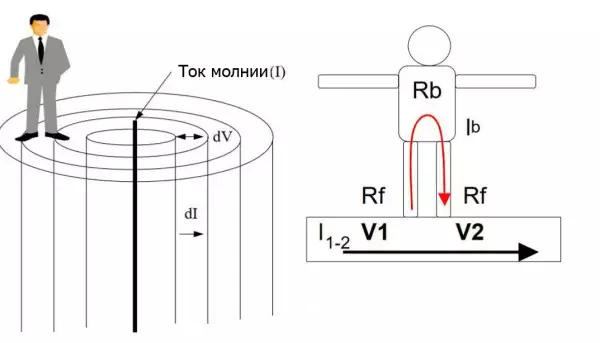 Step Voltage: Dangerous Obscurity and Reliable Protection
Step Voltage: Dangerous Obscurity and Reliable Protection
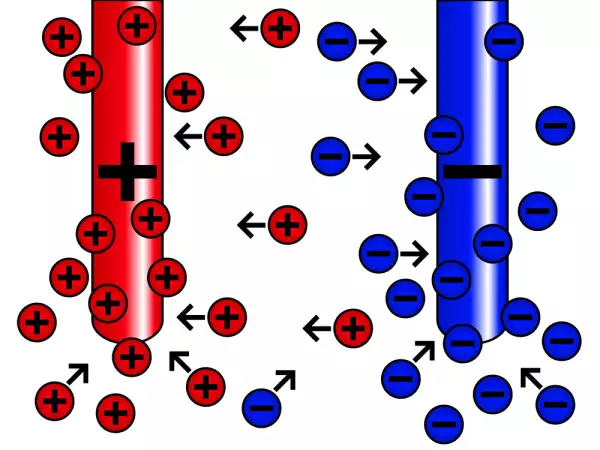 Nature of Electrochemical Corrosion
Nature of Electrochemical Corrosion
 Public Safety in Land Transport in case of Direct Lightning Strike
Public Safety in Land Transport in case of Direct Lightning Strike
